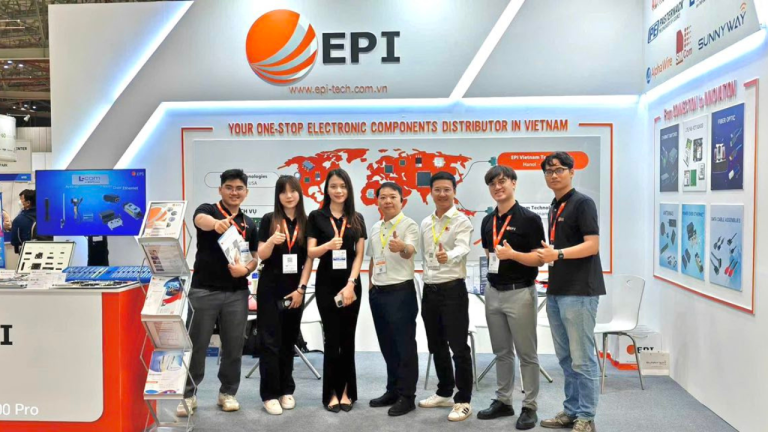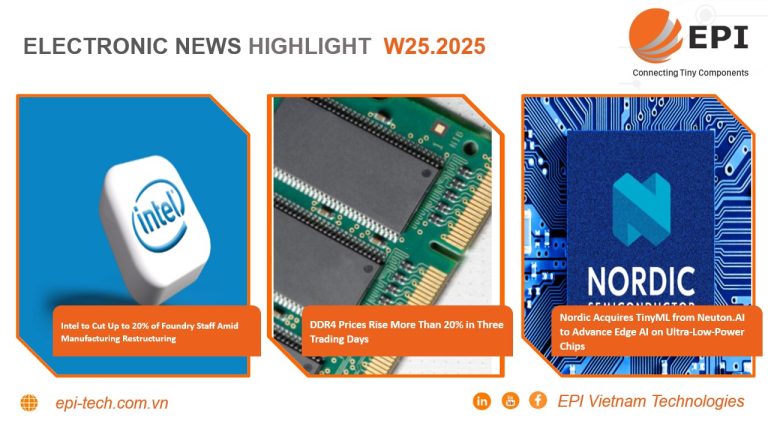ELECTRONICS NEWS HIGHLIGHT W51.2023

1. NVIDIA plans to establish manufacturing base in Vietnam
NVIDIA recently announced plans to establish a modern manufacturing facility in Vietnam. This announcement comes shortly after a visit by NVIDIA CEO Jensen Huang. Establishing a factory in Vietnam promises to help NVIDIA ensure the supply chain and promote the development of the semiconductor industry in the region.
During his visit, CEO Jensen Huang emphasized Vietnam’s key role as a key market for NVIDIA, reinforcing the company’s intention to establish a manufacturing foothold in the country. This move demonstrates the strategic importance that Vietnam holds in NVIDIA’s global operations.
An important milestone in this joint venture was marked by the meeting between Jensen Huang and Vietnamese Prime Minister Pham Minh Chinh. After the meeting, the Vietnamese Government issued a statement expressing support for NVIDIA’s initiative. The government predicts that the establishment of this manufacturing facility will not only attract the world’s top talent but also contribute significantly to Vietnam’s growing semiconductor ecosystem and overall digital advancement.
In the past, NVIDIA has actively cooperated with leading technology companies in Vietnam. These collaborations focus on deploying artificial intelligence in key areas such as cloud computing, automotive and healthcare.
Learn more: Nvidia CEO aims to set up a base in Vietnam
2. Murata shifts focus in the mobile phone segment
According to the report, the Chairman of Murata Manufacturing recently announced that in view of the slowing growth of the global smartphone market, the company will shift its focus from high-end mobile phones to the mid- to mid-range segment, and expect the mobile phone market to eventually overcome the sluggish growth caused by the saturation of the high-end mobile phone market.
Estimates provided by Murata show total global production of 1.1 billion mobile phones in the current year, with single-digit growth predicted in the future due to the slow smartphone market again.
Previously, Murata focused on high-end capacitors used in flagship models of industry giants such as Apple and Samsung. Murata’s shift to serve the need for affordable smartphones is intended to facilitate scale in rapidly growing markets.
By focusing its efforts on helping customers reduce production costs for affordable smartphones, Murata aims to tap into the potential of the mid- to low-end segment, where demand is expected to grow. This strategic realignment is seen as a proactive response to the challenges posed by the saturation of the luxury market.
Murata Manufacturing expects the smartphone market to grow 5% next year, ending March 2025. This growth forecast is mainly due to growing demand for mid-range to mid-range mobile phones. popular in key regions such as India, Africa and Southeast Asia.
Learn more: Murata plans to shift its focus from high-end mobile phones to the mid-to-low-end mobile phone market
3. Global semiconductor equipment sales are expected to reach US$124 billion in 2025
According to SEMI’s latest report, total global sales of semiconductor manufacturing equipment by original equipment manufacturers are expected to reach US$100 billion in 2023, a 6.1% decrease from last year’s record US$107.5 billion. Growth is expected to resume in 2024 and reach a new high of $124 billion in 2025.
Breaking down the data by equipment type, sales of fab equipment, covering wafer processing, fab facilities, and mask/reticle equipment, are projected to decline 3.7% in 2023 to $90.6 billion. However, sales in the wafer fab equipment sector are expected to rebound by 3% in 2024, with a significant 18% growth forecasted for 2025, fueled by new fab projects, capacity expansion, and technology migration.
Testing equipment and assembly and packaging equipment fields are expected to show robust growth, with projections of 13.9% and 24.3%, respectively, in 2024. Looking ahead to 2025, the back-end market is poised for sustained growth, with sales of test equipment expected to increase by 17%, and packaging equipment sales set to rise by 20%.
In terms of applications, SEMI anticipates that equipment sales for Foundry and Logic applications will constitute more than half of total fab equipment revenue. These applications are projected to grow 6% to $56.3 billion in 2023, experience a 2% contraction in 2024, and then surge by 15% to $63.3 billion in 2025. The report signals a resilient and dynamic future for the semiconductor equipment industry, marked by strategic transitions and promising growth prospects.
Learn more: Global semiconductor equipment sales are expected to reach US$124 billion in 2025



 English
English  Tiếng Việt
Tiếng Việt 













